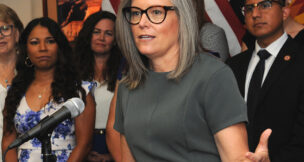State auditor finds schools spending less in classrooms
Arizona Capitol Reports Staff//March 5, 2009//[read_meter]
State auditor finds schools spending less in classrooms
Arizona Capitol Reports Staff//March 5, 2009//[read_meter]
Despite passage of a citizen's initiative nine years ago that raise hundreds of millions of dollars for public education, Arizona's school districts are now spending even less money in the...











